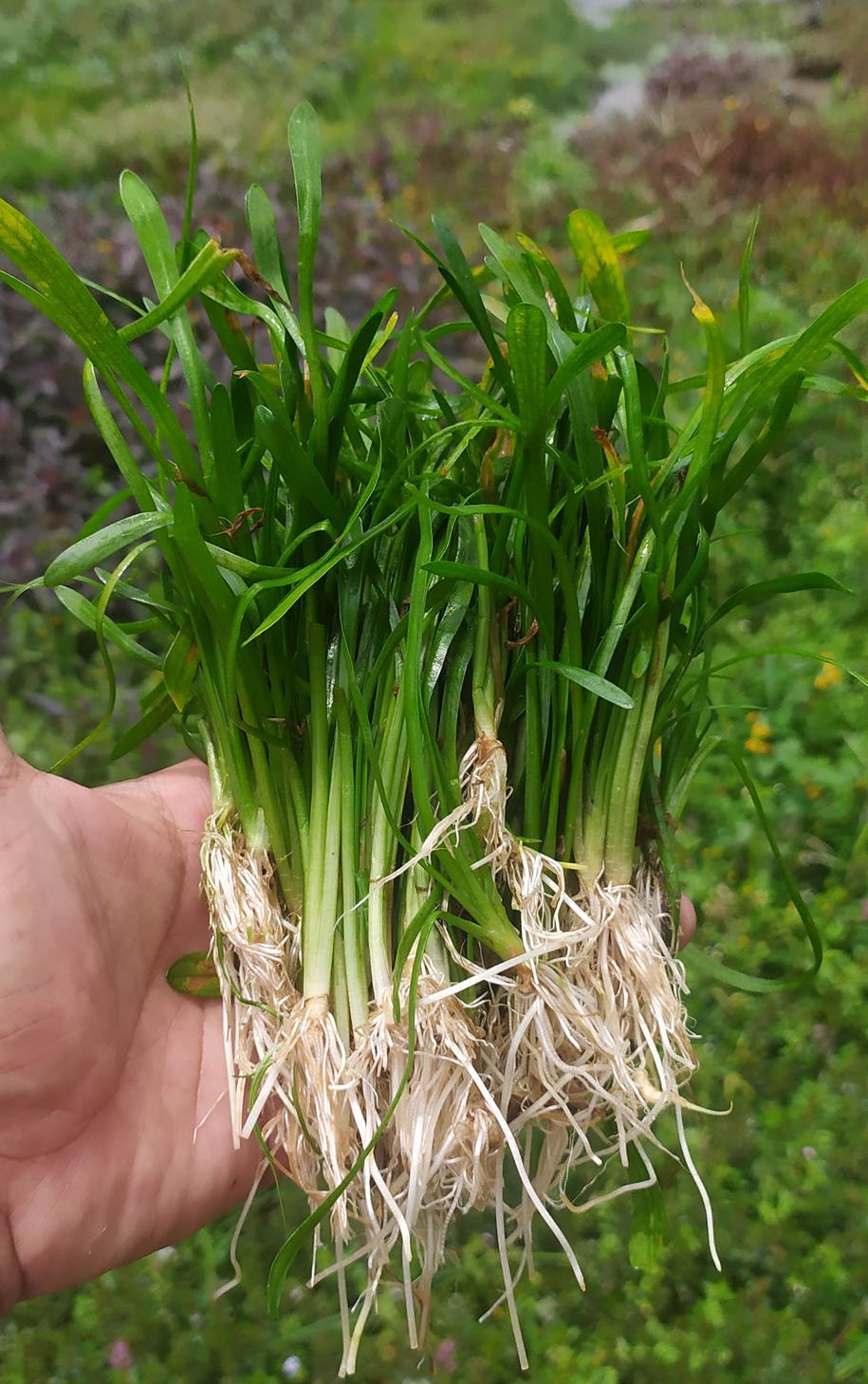 Image 1 of
Image 1 of


Java Fern- Mat
Java Fern, scientifically known as Microsorum pteropus, is a popular freshwater aquarium plant native to Southeast Asia, particularly found in countries like Thailand, Malaysia, and Indonesia. It is favored among aquarists for its hardiness, adaptability, and attractive appearance, making it suitable for a wide range of aquarium setups.
Physically, Microsorum pteropus features elongated, leathery, bright to dark-green leaves growing directly from a thick, creeping rhizome. The leaves can vary in appearance, from narrow and pointed to broad and wavy, depending on the specific variety. Typical height for Java Fern ranges between 8 to 12 inches (20 to 30 centimeters), though some varieties may grow taller under optimal conditions.
In the aquarium, Java Fern thrives in low to moderate lighting, making it an excellent choice for tanks without advanced lighting systems. It does not require CO₂ supplementation, though growth can improve slightly if provided. Fertilizers containing micronutrients and iron will help maintain lush, vibrant foliage. Crucially, Java Fern should never be buried directly in the substrate; instead, it should be attached to driftwood, rocks, or decorations, allowing the rhizome to remain exposed to water circulation.
Water parameters suitable for Microsorum pteropus include a temperature range of 68 to 82°F (20 to 28°C), a pH of 6.0 to 8.0, and soft to moderately hard water. This plant is highly adaptable and tolerant of a broad range of conditions, making it suitable even for beginner aquarists or low-tech setups.
Propagation of Java Fern is straightforward, occurring naturally as small plantlets develop along mature leaves. These can be gently removed and attached elsewhere in the aquarium to establish new plants.
Overall, Microsorum pteropus (Java Fern) is a robust, attractive, and versatile aquarium plant ideal for all levels of aquarists. Its undemanding nature, combined with its appealing appearance and easy propagation, makes it an essential plant for enhancing the aesthetics and biological stability of freshwater aquariums.
Java Fern, scientifically known as Microsorum pteropus, is a popular freshwater aquarium plant native to Southeast Asia, particularly found in countries like Thailand, Malaysia, and Indonesia. It is favored among aquarists for its hardiness, adaptability, and attractive appearance, making it suitable for a wide range of aquarium setups.
Physically, Microsorum pteropus features elongated, leathery, bright to dark-green leaves growing directly from a thick, creeping rhizome. The leaves can vary in appearance, from narrow and pointed to broad and wavy, depending on the specific variety. Typical height for Java Fern ranges between 8 to 12 inches (20 to 30 centimeters), though some varieties may grow taller under optimal conditions.
In the aquarium, Java Fern thrives in low to moderate lighting, making it an excellent choice for tanks without advanced lighting systems. It does not require CO₂ supplementation, though growth can improve slightly if provided. Fertilizers containing micronutrients and iron will help maintain lush, vibrant foliage. Crucially, Java Fern should never be buried directly in the substrate; instead, it should be attached to driftwood, rocks, or decorations, allowing the rhizome to remain exposed to water circulation.
Water parameters suitable for Microsorum pteropus include a temperature range of 68 to 82°F (20 to 28°C), a pH of 6.0 to 8.0, and soft to moderately hard water. This plant is highly adaptable and tolerant of a broad range of conditions, making it suitable even for beginner aquarists or low-tech setups.
Propagation of Java Fern is straightforward, occurring naturally as small plantlets develop along mature leaves. These can be gently removed and attached elsewhere in the aquarium to establish new plants.
Overall, Microsorum pteropus (Java Fern) is a robust, attractive, and versatile aquarium plant ideal for all levels of aquarists. Its undemanding nature, combined with its appealing appearance and easy propagation, makes it an essential plant for enhancing the aesthetics and biological stability of freshwater aquariums.
Java Fern, scientifically known as Microsorum pteropus, is a popular freshwater aquarium plant native to Southeast Asia, particularly found in countries like Thailand, Malaysia, and Indonesia. It is favored among aquarists for its hardiness, adaptability, and attractive appearance, making it suitable for a wide range of aquarium setups.
Physically, Microsorum pteropus features elongated, leathery, bright to dark-green leaves growing directly from a thick, creeping rhizome. The leaves can vary in appearance, from narrow and pointed to broad and wavy, depending on the specific variety. Typical height for Java Fern ranges between 8 to 12 inches (20 to 30 centimeters), though some varieties may grow taller under optimal conditions.
In the aquarium, Java Fern thrives in low to moderate lighting, making it an excellent choice for tanks without advanced lighting systems. It does not require CO₂ supplementation, though growth can improve slightly if provided. Fertilizers containing micronutrients and iron will help maintain lush, vibrant foliage. Crucially, Java Fern should never be buried directly in the substrate; instead, it should be attached to driftwood, rocks, or decorations, allowing the rhizome to remain exposed to water circulation.
Water parameters suitable for Microsorum pteropus include a temperature range of 68 to 82°F (20 to 28°C), a pH of 6.0 to 8.0, and soft to moderately hard water. This plant is highly adaptable and tolerant of a broad range of conditions, making it suitable even for beginner aquarists or low-tech setups.
Propagation of Java Fern is straightforward, occurring naturally as small plantlets develop along mature leaves. These can be gently removed and attached elsewhere in the aquarium to establish new plants.
Overall, Microsorum pteropus (Java Fern) is a robust, attractive, and versatile aquarium plant ideal for all levels of aquarists. Its undemanding nature, combined with its appealing appearance and easy propagation, makes it an essential plant for enhancing the aesthetics and biological stability of freshwater aquariums.




